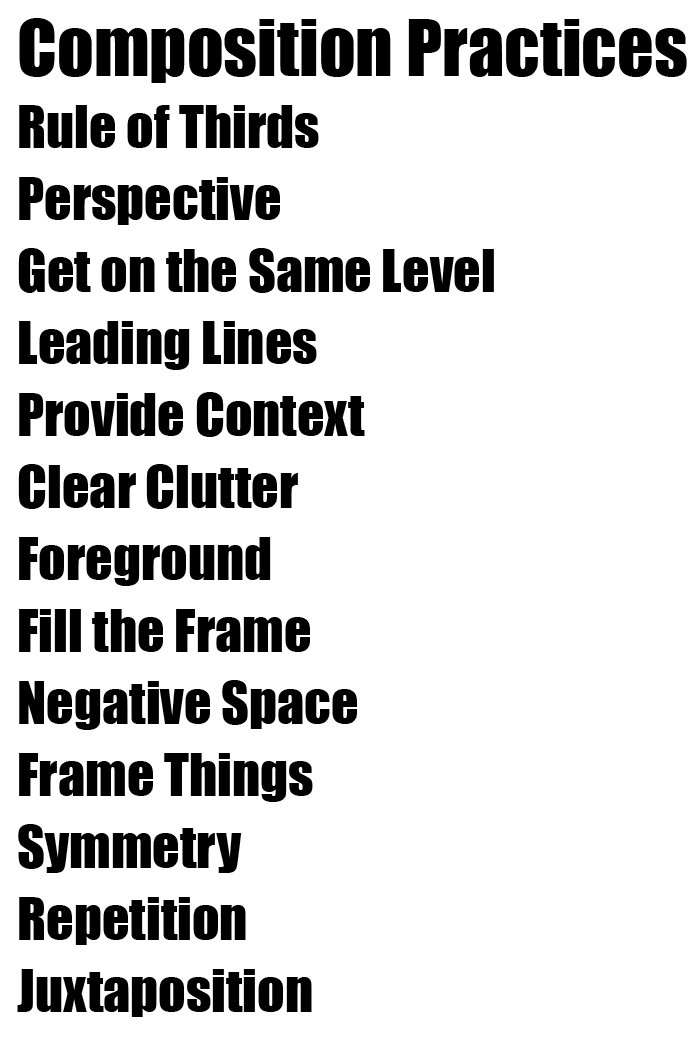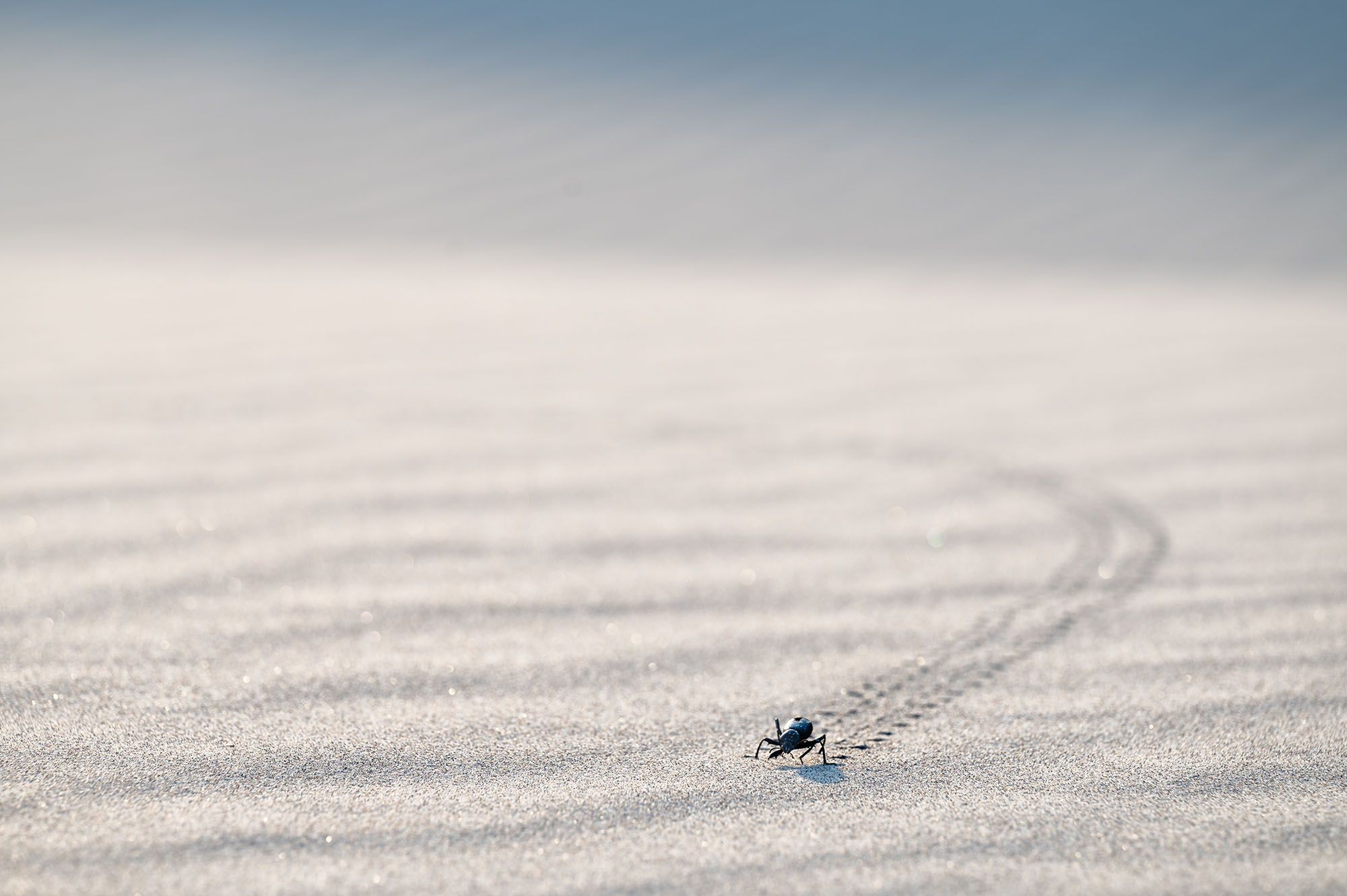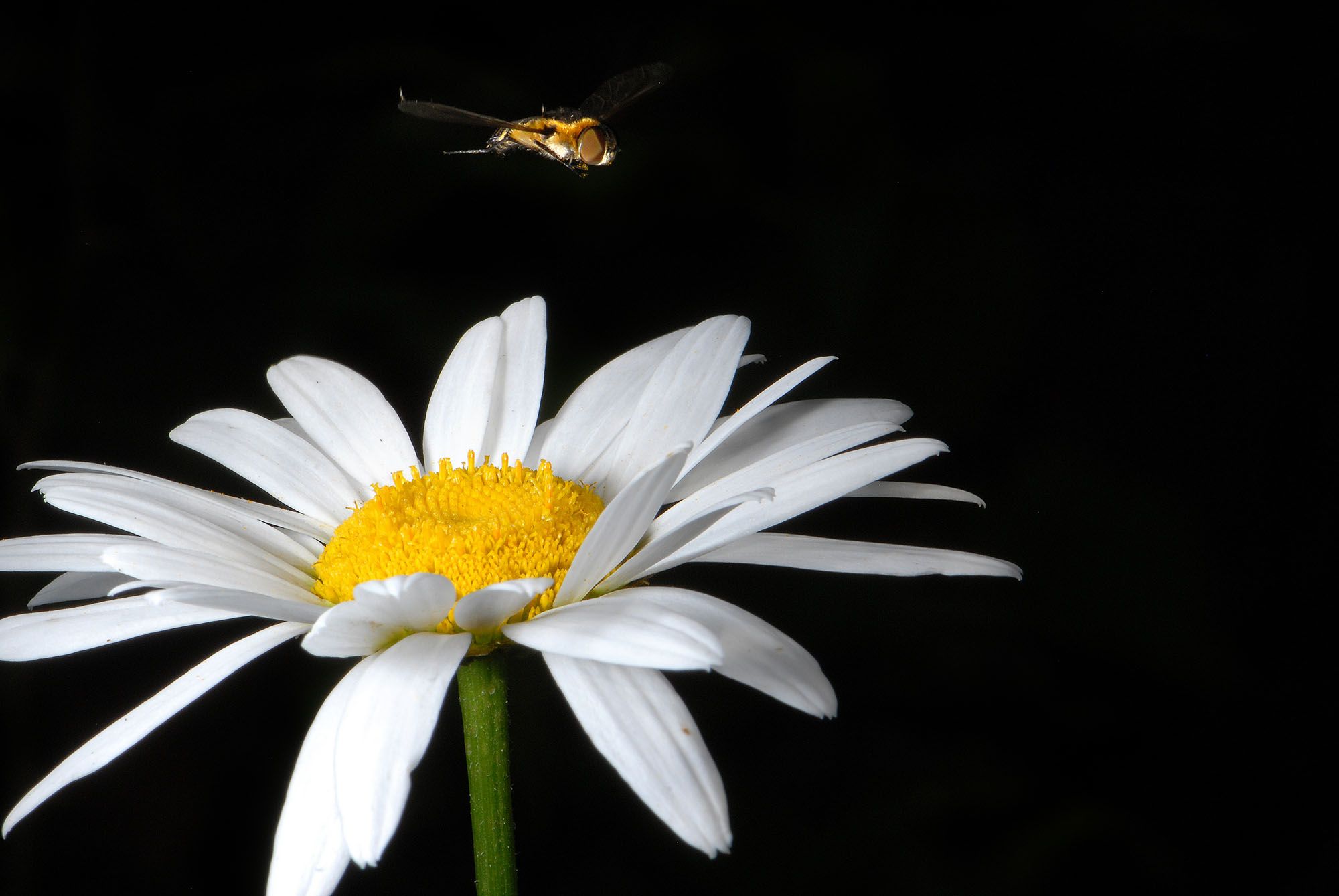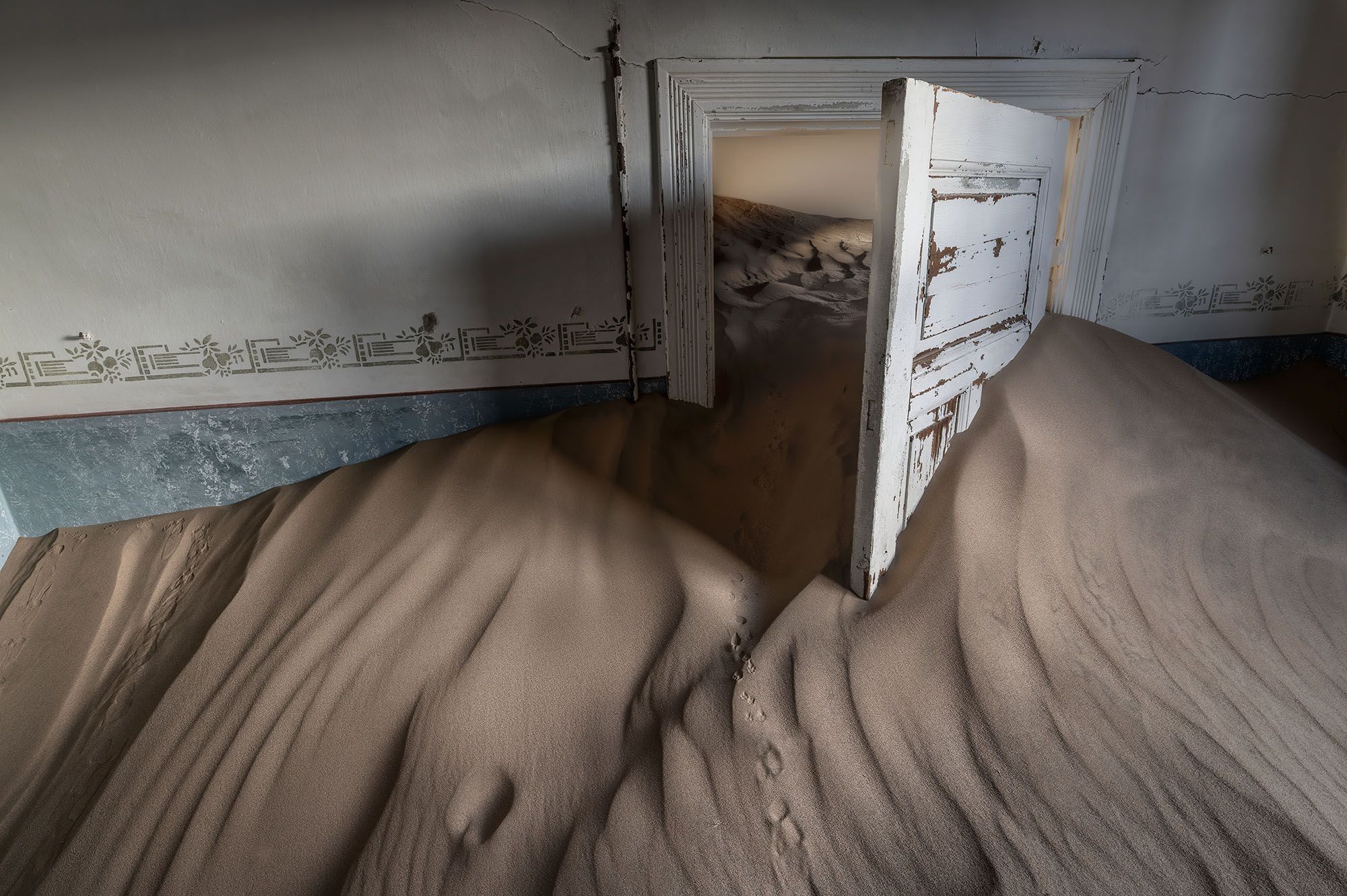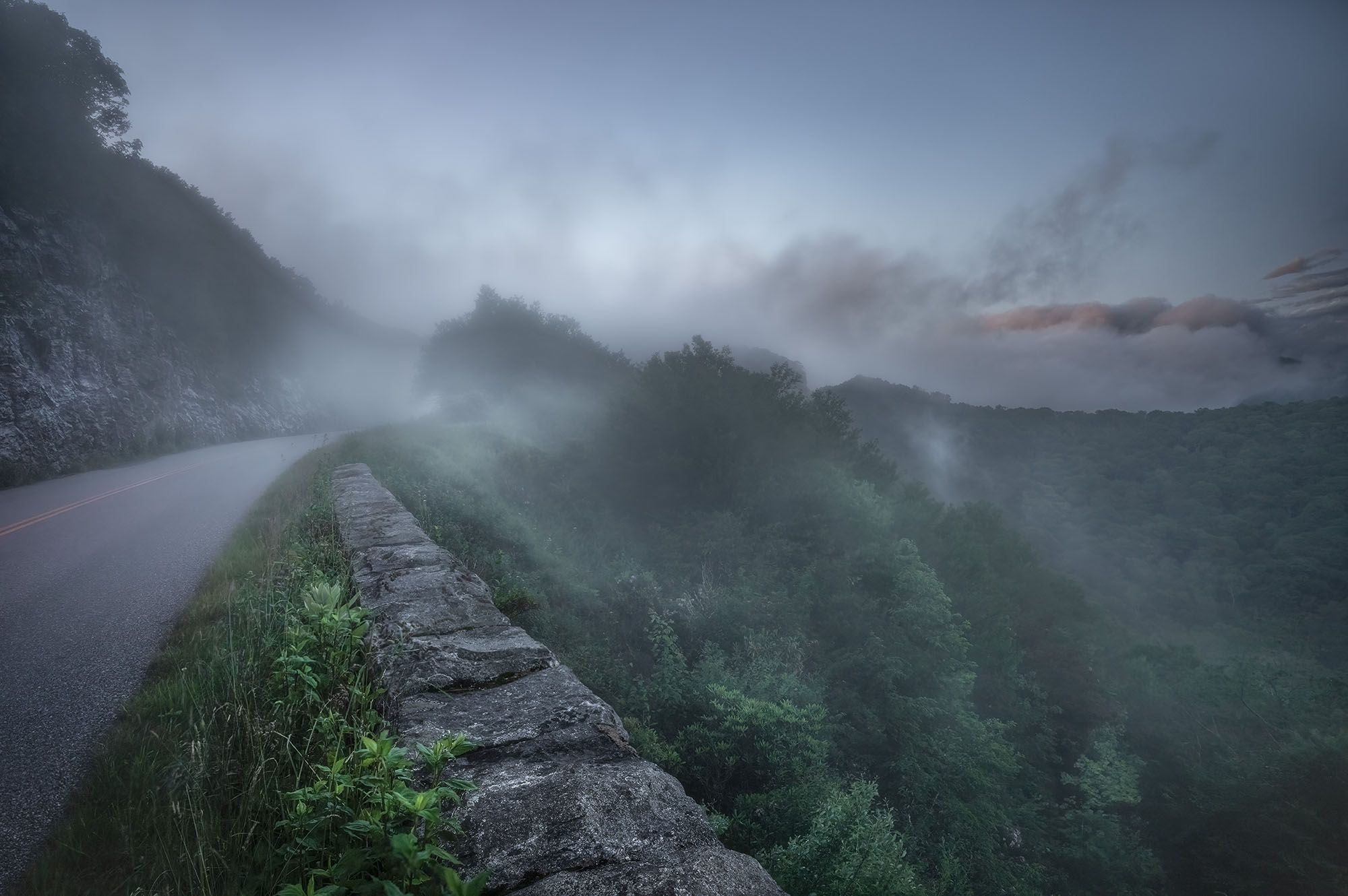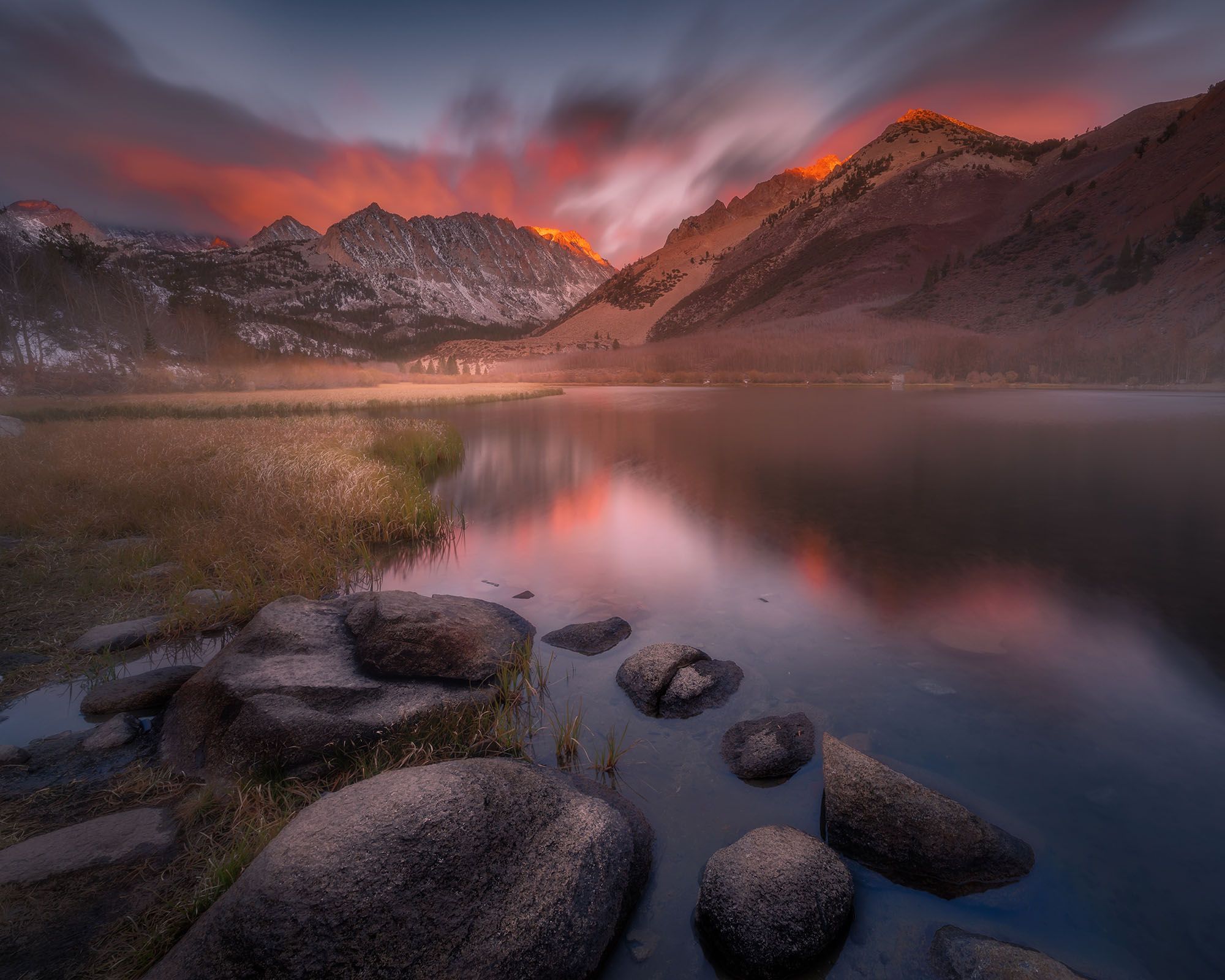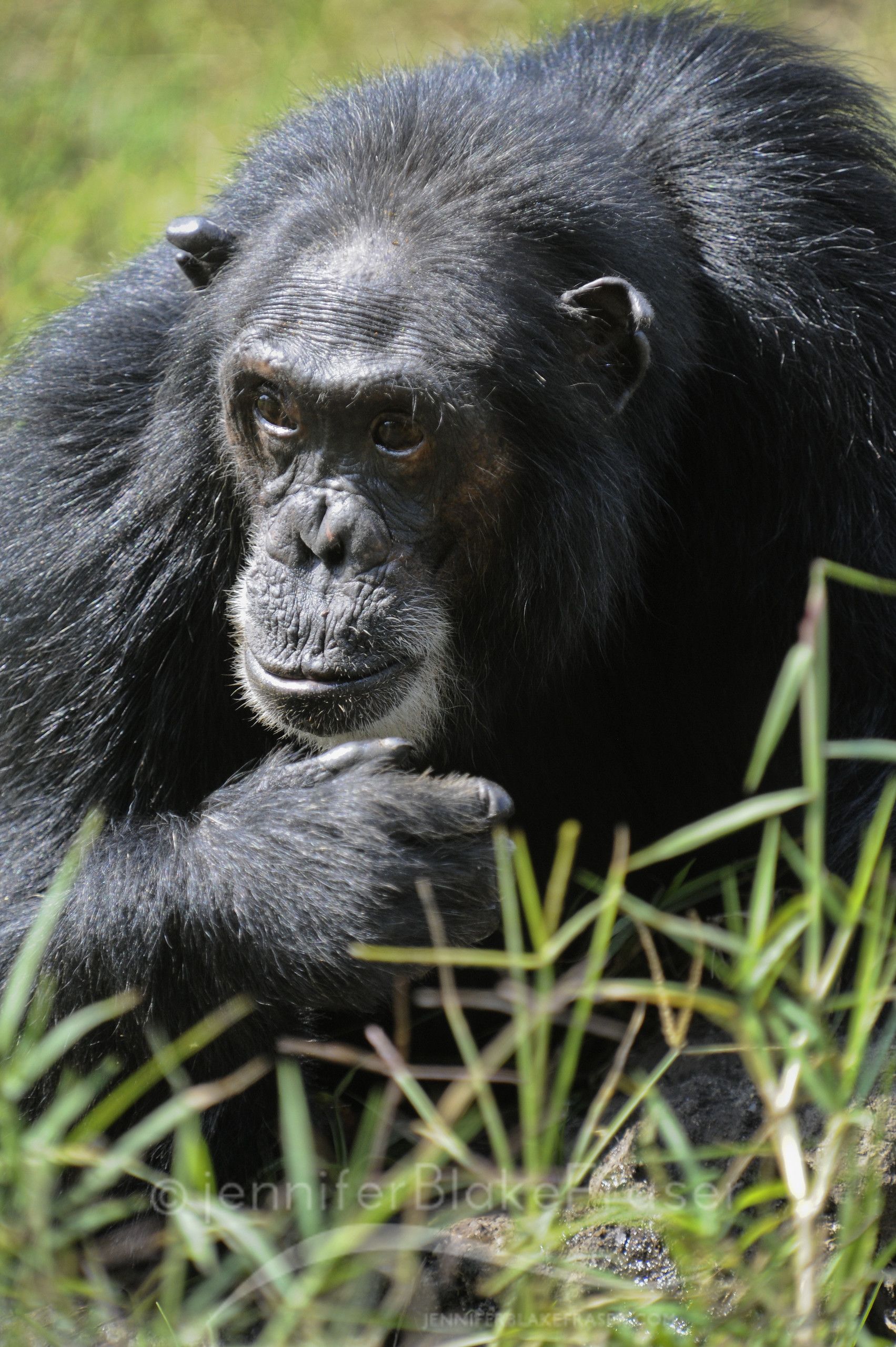Composition
-
Composition is the most important tool in our tool belt to tell our story.
-
Composition allows you to include the things that help tell your story and allows you to get rid of things that detract from your story.
-
You can save a lot of bad exposures and fix bad processing but you really can't fix bad composition.
-
It doesn't matter if it's the most expensive camera equipment in the world or a 1980's film camera with a flash cube, a photographer has to have good composition.
-
If you only learn one thing, learn good composition and this will get you 70% there 70% of the time.
-
The only technical thing you have to know to achieve good composition is how to tap the shutter button.
-
Good composition can be learned
-
You don't need to use every tool of good composition on every scene. Knowing the right tool(s) to use to tell your story is the trick to good photography!
-
Rules are made to be broken and a good photographer knows when to break the rules.
Good Composition Practices
Below are quick links to the practices of good composition.
Rule of Thirds
The Most Important Rule of Composition
You ALMOST ALWAYS want to have the subject off-center.
You would think that you would want to put the subject of a photo in the middle of the frame but this is rarely true.
In your mind, imagine dividing your screen into thirds both from left to right and top to bottom like a tic-tac-toe board. By placing the center of your subject on any of the imaginary lines of the tic-tac-toe board, you have successfully composed according to rule of thirds.
This concept is so important to composition that most cameras have a way to turn on a grid view so you don't have to guess or imagine.
Sometimes when you compose an image with the subject off-center, the camera loses focus or exposure. You can lock focus and exposure to override this.
Some Examples
In reality, almost every image on the rest of this page is practicing rule of thirds but below are a few. In each case, the subject or the center of action is placed 0ff-center on or near a third.
If a person is turned to the side, it usually works best to leave space on the side they are facing. It helps imply story.
Perspective
Brains want to be stimulated and one of the best ways to do this is to force it to see something from an unusual angle. Stand on things, lay on the ground, shoot from the top, shoot from below, shoot through things. Do anything you can to present an ordinary scene from an angle they don't normally see.
Get on the Same Level
Part of your job in telling your story is to help the viewer feel like they are right there. One way to do this is to get on the same level as the subject. Is the subject a small child playing on the beach? Squat down and hold the camera at their level. Is the subject an ant crawling on the ground? Set your camera on the ground to shoot from the ant's perspective. It often helps tell your story more effectively by placing the viewer as the same level as the subject.
Set the Scene / Provide Context
The viewer doesn't have the benefit of being there at the scene with all their senses. What might look like a HUGE rock to you might only look like a pebble if there is nothing else in the frame to give it context.
When doing this, be sure to frame things with objects of a "known" size - a person, a car, etc..
Framing a huge rock with another rock isn't helpful because the viewer has no idea how large either rock is.
Clear the Clutter
One of the BEST ways to draw your viewer into your story is to get rid of everything in the frame that isn't helpful in telling your story.
-
Change your angle
-
Move things out of the way
-
Use the sky - one of the best ways to get rid of clutter is to frame things against the sky.
-
Use long exposure to smooth out unwanted "chatter"
-
Use a shallow depth of field to blur the foreground and background keeping only your story in focus.
-
Fill the frame
Leading Lines
As the story teller you must draw the viewer into your story. An effective way to do this is with diagonal lines pointing into the frame. This gives the eye something to follow and invites the viewer into your story. Look for objects that sort of form a line and compose your shot with that line pointing into the frame.
The "V" shape is actually very dynamic so finding lines that form a "V" pointing into your frame suddenly makes your image have a much more dynamic feel.
Fill the Frame
Filling the frame with your subject is an effective way to make the viewer feel like they are part of the scene and it also helps remove clutter.
-
Zoom in - use a telephoto lens (on a phone tap the largest lens number)
-
Get close - moving in very close and shooting a macro is a great way to fill the frame
General Composition Shooting Tips
-
Don't take every shot holding the camera at chest level while you stand. Often, this is not the best way to tell your story.
-
If light and/or action is changing fast, take one shot immediately just so you are sure to capture something. Anything is better than nothing.
-
Take the "standard" shot or if it's a famous scene, take the "postcard" shot first to "get it out of your system". You have to capture what's in your head first before you can move on to more creative view points.
-
"Work the Scene"
-
- Take the first shot quickly if necessary
- Take the standard composition shots
- Take creative composition shots using as many of the tools of composition as you can that will apply to the scene at hand.
- If shots aren't giving you what you want do something different.
- Once you've gotten plenty of shots of one composition, move to another.
- Challenge yourself - seen it a million times? See if you can figure out a new and more interesting composition.
-
-
When you see other photos you really like, determine why you like them. What rules of good composition did they follow?
-
Learn which tools of composition will best tell your story for a given scene.
-
Rules are made to be broken and a good photographer knows when to break the rules.
Good Composition Cheat Sheet
Below is an image of the good composition practices that you can download and carry with you.
Desktop: right click or control click on the list below to save it.
Phone: long tap on the list below to save to photos.
Assign yourself homework of things you'd like to practice. (i.e. - today I'm going to work on leading lines)
